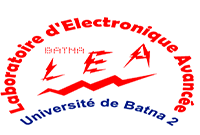Les onduleurs sont des convertisseurs DC-AC de plus en plus utilisés dans les systèmes énergétiques, en particulier dans les énergies renouvelables. Pour cela, les onduleurs doivent utiliser l'énergie disponible de manière efficace. Ils doivent donc avoir une efficacité et une fiabilité élevées. De plus, les performances de ces systèmes sont mesurées par leur efficacité, forme d'onde et distorsion harmonique de la sortie, et enfin leur coût, qui dépendent du choix optimal des composants et de la stratégie de contrôle. Dans cette thèse, nous étudierons certaines structures et stratégies de contrôle, en nous concentrant davantage sur la réduction de la distorsion harmonique totale (THD). La réduction du THD dans les inverseurs multiniveaux nécessite la résolution d'équations transcendantales non linéaires complexes. Sans avoir à résoudre ces équations, nous avons proposé d'utiliser le récent algorithme firefly (FFA) pour optimiser le THD, en trouvant les meilleurs angles de commutation et en garantissant la minimisation des harmoniques dans une bande passante prédéfinie par l'utilisateur. Le FFA a été comparé à certains algorithmes largement utilisés existants tels que l'algorithme génétique (GA), et a montré une convergence plus rapide. Nous avons également choisi d'utiliser l'une des meilleures structures matérielles optimisées existantes, où nous avons validé les résultats de la simulation par des tests pratiques. Nous insistons sur le fait que la meilleure conception seule ou la meilleure stratégie de contrôle seule ne peut pas résoudre le problème THD à un coût raisonnable. Il est impératif d'aborder les deux sujets en même temps. La THD obtenu grâce à la simulation de l'onduleur symétrique de treize niveaux a été réduite à 5% (FFT de 60 harmoniques). Afin de valider les résultats de la simulation, un prototype d'onduleur symétrique de treize niveaux a été réalisé et pratiquement expérimenté et testé avec différentes charges. Par conséquent, la THD mesurée avec une charge résistive était de 4,7% sur une bande passante de 3 kHz.
In this paper, a new radiation sensitive
field-effect Transistor (RADFET)
dosimeter design based on armchair-edge graphene nanoribbon (AGNR), for high performance low-dose monitoring applications, is proposed through a
quantum simulation study. The simulation approach used to investigate the proposed
nanoscale RADFET is based on solving the Schrödinger equation using the mode space (MS) non-equilibrium Green’s function (NEGF) formalism coupled self-consistently with a two dimensional (2D)
Poisson equation under the ballistic limits. The responsiveness of the proposed RADFET to the modulation of radiation-induced trapped charge densities is reflected via the
threshold voltage, which is considered as a sensing parameter. The dosimeter behavior is investigated, and the impact of variation in physical and geometrical parameters on the dosimeter sensitivity is also studied. In comparison to other RADFETs designs, the proposed radiation sensor provides higher sensitivity and better scalability, which are the main requirements for futuristic dosimeters. The obtained results make the suggested RADFET dosimeter as a viable and attractive replacement to silicon-based MOS dosimeters.
The Equilibrium Voltage Step (EVS) technique has been used for extraction of depth and energy concentration profile of traps situated in the oxide of a lightly stressed metal-oxide-semiconductor (MOS) structure. This has been achieved up to the very near Si-SiO2 interface. The results are discussed and compared with those obtained using charge pumping (CP) technique. A good agreement is achieved between the trap densities extracted using the two methods even though differences in the shape of the profiles can be observed. The results also very well agree with those published previously using current deep level transient spectroscopy (C-DLTS).
The article introduces the benefits and application features of Silvaco Technology Computer Aided Design‘TCAD’ tool to predict the performance of electrical components and their reliability. In this work, in order to improve the electrical parameters of MOS transistor such as, threshold voltage and flat band voltage, we have simulated Phosphorus and Arsenic diffusion profiles in three dimensions before and after thermal annealing in a highly doped polysilicon film using the simulator Silvaco TCAD based on Pearson type IV models. The model takes into account the distribution of vacancy mechanisms and effects related to high concentrations, such as the formation of clusters to study solid solubility limit. The results have been analyzed and discussed in order to extract depth of doping (Phosphorus and Arsenic) and they have been able to optimize the silicon oxide thickness, to reduce the penetration of doping. Based on earlier studies a study of the effect of solubility on these profiles was performed
In this paper we have developed an algorithm of boron diffusion after thermal annealing in a highly doped polysilicon film. This algorithm takes into account electrically active point defects by associating some parameters such as boron solubility limit and diffusion coefficient. We have studied effect of annealing temperature in order to perform impact of this parameter on maximum depth diffusion of junction and maximum of concentration by analysis of Secondary Ion Mass Spectrometry (SIMS) profiles. In fact we have proposed numerical model based on Fick's equation, resolved by finite difference method under Matlab also we have simulated this phenomenon by Silvaco software.
In this paper, we propose a potential high efficiency
Cu2ZnSn(S,Se)4/
CdS (
CZTS) solar cell design based on graded band-gap engineering that can offer the benefits of improved absorption behavior and reduced recombination effects. Moreover, a new hybrid approach based on analytical modeling and Particle Swarm Optimization (
PSO) is proposed to determinate the optimal band-gap profile of the amended
CZTS absorber layer to achieve further efficiency enhancement. It is found that the proposed design exhibits superior performance, where a high efficiency of
16.9% is recorded for the optimized solar cell with a relative improvement of
92%, compared with the reference cell efficiency of 8.8%. Likewise, the optimized
CZTS solar cell with a graded band-gap enables achieving a higher open circuit voltage of 889 mV, a short-circuit current of 28.5 mA and a fill factor of
66%. Therefore, the optimized
CZTS-based solar cell with graded-band gap paradigm pinpoints a new path toward recording high-efficiency thin-film solar cells through enhancing carrier collection and reducing the recombination rate.